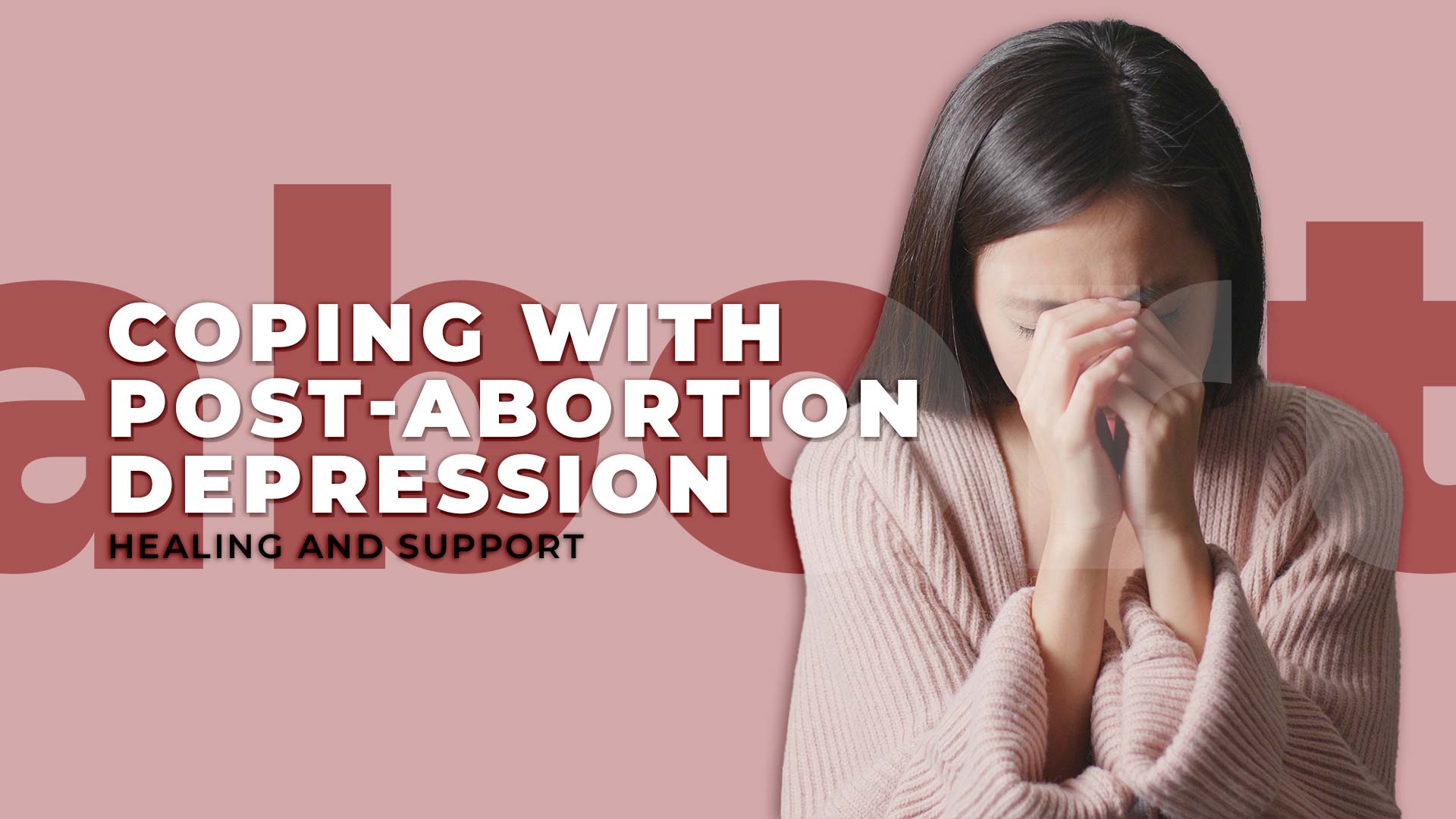Abortion is a procedure that is most effective when done during the early stages of pregnancy. It is very common to be concerned about whether the abortion was successfully carried out or not. Some signs can help figure out whether the abortion failed or was successful, and it is important to keep an eye out for these signs.
Medical abortion is generally very effective when done in the proper manner. The success rates can go up to 98% depending upon the medications used and the time of the pregnancy. Abortions are most successful when done before the pregnancy period reaches 9 weeks. Thus, the earlier in pregnancy one is when they take the pills, the higher the chances are for the pills to work effectively.
However, anxiety regarding the results is common. It is relieving to have some confirmation about the status of the abortion. In case the abortion pill failed to terminate the pregnancy, it is best to detect the symptoms early. Early detection of a failed abortion is important to prevent the more complicated procedures that may become necessary during the later stages of pregnancy. After the procedure, it is better to keep an eye out for any symptoms in case the abortion fails.
Will a Pregnancy Test be Accurate?
It is important to know that pregnancy tests taken right after an abortion will not be effective. The hormone released during pregnancy, also known as Human Chorionic Gonadotropin or hCG, can stay in the body even after the pregnancy has been terminated. Ideally, after having an abortion one should wait for a while before taking the test to seek any confirmation. There is also the option of an ultrasound. An ultrasound is recommended two weeks or so after the abortion and a blood pregnancy test may be taken four to five days later. All of these can confirm whether the pregnancy has been successfully terminated or not.
Symptoms of pregnancy may last for a while. After an abortion, it can take a few days for the pregnancy symptoms to go away. Some of these symptoms are:
- Frequent urination
- Nausea or vomiting
- Tender muscles and breasts
Tenderness in the breasts may even last for longer depending upon the duration of the pregnancy (for instance, if the person was more than 12 weeks pregnant). Your period, however, should return within four to eight weeks after the abortion took place.
Signs of Pregnancy Continuing After the Abortion
Abortions are mostly safe and successful procedures. But the question remains, can abortions fail? There is very little chance of a medically induced abortion to fail and an even lesser chance in the case of surgical abortion. The chance that pregnancy might continue even after an abortion attempt is less than one percent. However, it is recommended to keep an eye out for some failed surgical abortion symptoms. In case you suspect this to be the case, it is best to revisit the abortion clinic. Some factors may hint towards a pregnancy still ongoing. Some of these are:
- The symptoms experienced during pregnancy continue and do not go away even after a significant period.
- Another missed period after the abortion procedure has been finished.
- A pregnancy test may come back positive 3-4 weeks after abortion even if the pregnancy has been successfully terminated. However, positive test results even after this period (when the hormones should have stabilized) is a sign that the person may still be pregnant. Thus, positive pregnancy after an abortion is only reliable if it is after 3-4 weeks.
In case a person notices these unsuccessful abortion symptoms, and the procedure needs to be repeated, the physician may recommend you attempt another medical termination (if you took the abortion pill before too). If surgical procedures have not been attempted yet, then the doctor would advise a surgical abortion or a manual vacuum aspiration. There may be different types of treatment offered. Having to repeat the procedure can bring about much distress and anxiety. It is important to have the support and seek help whenever needed during such stressful times.
A few other factors to look out for after an abortion procedure to determine its success are the following:
- Abdominal pain that remains even after the patient has taken painkillers can be a cause for alarm
- A fever that lasts for more than twenty-four hours could be a matter of concern
- Vaginal discharge that’s uncommon or abnormal in your case
While you may see the embryo sac during the abortion, chances are that you may not see it. Since this is not a guaranteed factor, it cannot be used to signify whether the abortion was successful or not.
What is an Incomplete/Failed Abortion?
After the successful termination of the pregnancy, there may still be materials left in the womb. This is because the lining of a part of the womb formed a large clot that couldn’t be shed. This clot may have gotten stuck in the uterus of the cervix. A surgical abortion failure may also lead to an incomplete abortion. Symptoms that could signify an incomplete abortion are the following:
- Stomach cramps or excessive bleeding: Bleeding is to be expected, but if it is more severe than necessary then it could be the sign of incomplete abortion.
- Bleeding for more than 3 weeks: There is nothing uncommon about a certain amount of bleeding. However, if it goes on for more than three weeks, it could be due to an incomplete abortion.
- Sudden bleeding: If there are sudden episodes of heavy and unprecedented bleeding, it could be a symptom.
Incomplete abortion may happen in 5 out of every 100 abortions. It is therefore uncommon. Anyone noticing these symptoms after an abortion should consult their physician immediately. An incomplete abortion can be dangerous as it may lead to blood loss. It can also lead to an infection. To prevent this, the person would need to be treated immediately. The ways to treat an incomplete abortion are as follows:
- Medication that will lead to your uterus contracting.
- Dilation and curettage or manual vacuum aspiration, like these, could help remove the extra material from your womb that is causing the bleeding.
While these treatments sound familiar to the process of an abortion, it is not the same as the person concerned is no longer pregnant. The processes here aim at the removal of a clot and not the fetus, which has already been terminated. This is not to be considered a second termination.
Signs of a Successful Abortion
What happens after an abortion? And how do we ascertain that the procedure went well? There are certain ways to confirm that the abortion was completely successful:
- The procedure resulted in bleeding and cramps. This is related to the process of abortion itself. What happens to the fetus after an abortion? The fetal tissue leaves the body through blood; hence bleeding is an important part of successful abortion. The uterus adjusts its size through cramping, hence that is also a necessary part of abortion. Painkillers and heating pads can help deal with the pain.
- Bleeding starts after four hours (maximum) of taking misoprostol. Studies have shown that the termination of pregnancy is likely to be more than 90% successful with mifepristone and misoprostol. For misoprostol, bleeding may take 24 to 72 hours to occur. If bleeding doesn’t occur, then something did not work out in the procedure.
Along with the failed medical abortion symptoms, it is also important to recognize and consult your physician about the signs of successful abortion.
Final Thoughts
Note that bleeding does not directly imply that abortion was successful. If the symptoms of pregnancy, as mentioned above, still continue to persist then the abortion may not have been successful. The time frame in which the success of a pregnancy can be determined is within four weeks after the treatment. Alternatively, it is also normal for the bleeding to be heavier than the amount experienced during a period.
The blood may also contain large clots. Unless it’s severe enough to raise alarm about blood loss, the bleeding is not a cause for concern. Simultaneously, less bleeding does not necessarily imply that the abortion has failed. For short-length pregnancies, the bleeding will also likely be reduced. To confirm whether or not someone is still pregnant after a medical abortion, it is advisable to look for other symptoms too. It is best not to rely on bleeding as a measure of success in abortion, especially for the first few weeks.
Medical abortion is a safe procedure, however, it is important to plan and ensure that you have access to further medical care should you need it. Do not hesitate to approach a healthcare professional in case of an emergency. It is not possible to tell the difference between a miscarriage and a medically induced abortion, so do not be concerned about discretion.
References
- Redinger A, Nguyen H. Incomplete Abortions. [Updated 2022 Jun 27]. In: StatPearls [Internet]. Treasure Island (FL): StatPearls Publishing; 2023 Jan-. Available from: https://www.ncbi.nlm.nih.gov/books/NBK559071/
- Kim C, Barnard S, Neilson JP, Hickey M, Vazquez JC, Dou L. Medical treatments for incomplete miscarriage. Cochrane Database Syst Rev. 2017 Jan 31;1(1):CD007223. https://pubmed.ncbi.nlm.nih.gov/28138973/
- HAIMOV-KOCHMAN, R., ARBEL, R., SCIAKY-TAMIR, Y., BRZEZINSKI, A., LAUFER, N. and YAGEL, S. (2007), Risk factors for unsuccessful medical abortion with mifepristone and misoprostol. Acta Obstetricia et Gynecologica Scandinavica, 86: 462-466. https://doi.org/10.1080/00016340701203632





